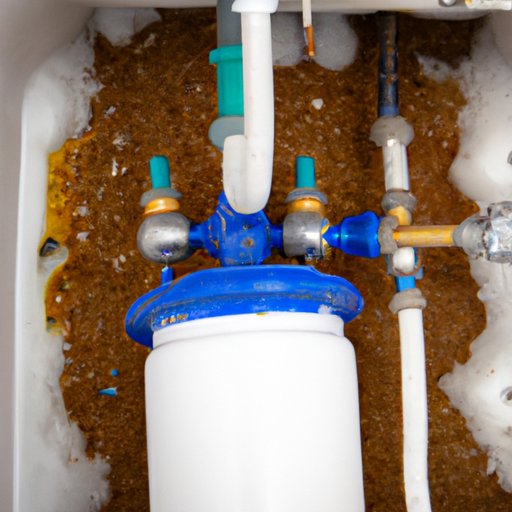Introduction
Flushing a water heater is a crucial step in maintaining the efficiency and longevity of your home’s plumbing system. Over time, sediment and minerals accumulate in the tank, reducing its ability to heat water and putting excess strain on the appliance. This can lead to higher energy bills, shorter lifespan, and rusting of the tank. This article will provide you with a step-by-step tutorial, maintenance guide, frequently asked questions, video tutorial, and visual infographic to help you properly flush and maintain your water heater.
Step-by-Step Tutorial
The first step in flushing a water heater is to turn off the power source or gas supply. This can prevent any burns or accidents from occurring. Turn off the cold-water supply valve that feeds water into the heater. Then, open up a hot water faucet in the house to relieve pressure. Attach a garden hose to the drain valve and place the other end of the hose in a bucket or drain. Open the drain valve and allow the water to flow out. Once the water stops, turn on the cold water supply valve to flush out any remaining sediment and debris in the tank.
Next, remove the sediment by filling the tank with cold water again. Turn off the supply valve and let the water settle. Attach a hose to the drain valve and empty the tank again. Repeat this process until the water runs clear. It is important to note that some sediment may still remain, but this is okay as long as the majority of it is removed.
Finally, close all the valves, remove the hose, and turn on the power or gas supply. Allow the tank to fill and run hot water from a faucet to ensure it’s working correctly.
Maintenance Guide
Maintaining your water heater can prolong its life and reduce the risk of costly repairs. Check the temperature and pressure relief valve every six months to ensure it’s working. Test it by lifting the lever halfway, and water should flow out. If it doesn’t, or if it’s leaking, it needs to be replaced. Routine flushing every year or two can help remove sediments before they can cause problems. Sediment buildup leads to overworking the appliance and makes it unlikely to heat the water effectively.
To add to this, consider that preventive maintenance is essential for a longer-lasting water heater. Look for wet or corroded joints, since they may indicate a leak. Check the water pressure to see if it’s too high, which can strain the heater. Finally, insulate your water heater tank to improve efficiency. You can even get a timer installed to manage when the heating turns on and off.
Frequently Asked Questions
Q: How often should I flush my water heater? A: It’s best to flush your water heater at least once a year, or more frequently if you’re experiencing issues with water temperature or pressure.
Q: What tools do I need to flush a water heater? A: You’ll need a garden hose, a bucket, and pliers or a wrench to turn the drain valve.
Q: Is it safe to flush a water heater? A: Yes, it is safe as long as you follow the proper safety precautions. Make sure to turn off the power or gas supply before flushing, wear gloves to protect your hands, and be cautious around hot water.
Video Tutorial
A visual tutorial is a great way to see the process in action and get more in-depth instructions. Here is an excellent video tutorial to help you flush your water heater. Follow along and get your water heater back in excellent condition:
Infographic
Here is an easy-to-follow infographic that will guide you through the process of flushing your water heater. Follow the steps to keep your water heater running smoothly:

Conclusion
Flushing a water heater is a necessary part of maintaining your home’s plumbing system. Regular maintenance will ensure that your water heater lasts longer, functions better, and reduces the risk of costly repairs. Follow the step-by-step tutorial, use the maintenance guide, and check out the frequently asked questions to answer any questions you may have. With the help of the video tutorial and infographic, flushing your water heater has never been more comfortable. So, keep your plumbing system in top shape by flushing your water heater regularly.
